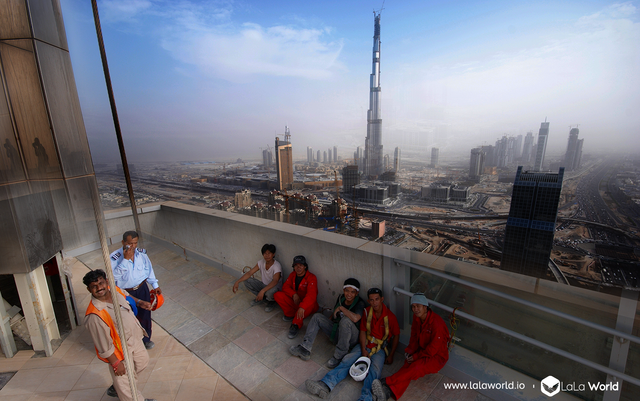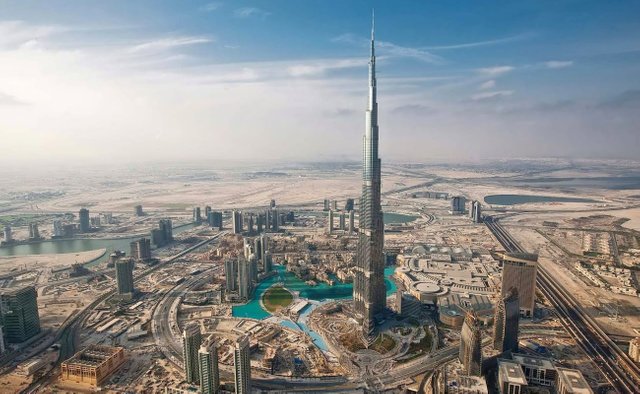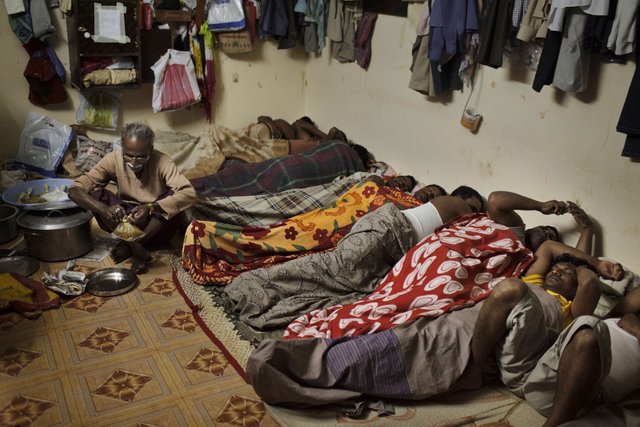
When you hear the name “Dubai”, scenes of massive skyscrapers, crystal waters and high-fashion shopping malls may spring to mind. Its extravagant millionaire residents have been known to keep lions as pets, and the police force possesses an impressive line-up of sports cars including Aston Martins, Bugattis and Ferraris. The city has become renowned for its luxury shopping, stunning ultra-modern architecture, lively nightlife and more.
Naturally this didn’t happen overnight; though contrary to what many think it isn’t the result Dubai’s oil trade (which only provides around 1% of its gross domestic product). Dubai’s maritime activities are one of the main sources of its wealth, with its port Jebel Ali being among the busiest within the Middle East. The port is located in one of the city’s many “economic free zones”, set up by the government, which provide tax exemption and many other benefits. And this single zone alone accounts for 21% of Dubai’s GDP.
This zoning and extensive development within the city has helped turn Dubai into a global business hub and luxury tourist destination. One of the main reasons why Dubai’s economy flourished alongside such burgeoning development was the exceedingly low cost of the labor. Cheap labor has been provided for many years in the UAE by millions of migrant workers, who make up approximately 80% of the resident population (and about 90% of its workforce). Around half of the expatriate population of Dubai are Indian, many of which left families behind to travel abroad in search of income to support their loved ones.
However, for many that journey has transformed from a ray of hope into a situation of despair. Dubai’s migrant workers have faced a number of difficulties. They are cast aside as outsiders, not worthy of the same benefits UAE citizens enjoy – and in some cases their treatment has been labeled as less than humane. The difficulties faced by migrant workers include those such as extremely low wages, the withholding of wages and passports, financial exclusion, squalid living conditions, high rates of injury, and even death.

The 830m-tall Burj Khalifa (the world’s tallest building) stands ominously over the city. It’s builder, Arabtec, was investigated in a BBC documentary and found to house workers in unhygienic and overcrowded conditions.
In recent years, governments have argued they have enacted laws to provide for more protection of migrant workers. For example, in September 2017, the UAE announced that Shaikh Khalifa Bin Zayed Al Nahyan approved the country’s first law on domestic workers. The law will provide for allowances such as one day of paid rest per week, decent accommodation and the possession of personal identification papers by individuals. It is understood the law was to be implemented two months after being published in the Official Gazette, however an inspection of the 2017 gazette revealed no sign of the law. Even if the law is implemented, its enforcement is yet another hurdle. Abuses against migrant workers are said to be systemic, and without independent monitoring they are all but certain to continue.

The accommodation provided for migrant workers is often less than satisfactory
One of the biggest enablers of abuse of migrant workers is the kafala system. This is a system in which employers sponsor workers in order for them to travel from their home countries to the Gulf states. The contracts involved are complicated and allow employers to basically control the lives of their workers, granting them the power to decide when their workers get paid, when they can switch jobs, when they can leave the country, etc. For these reasons, the system has been likened to a form of modern day slavery. And the problem isn’t restricted to male workers. Female workers are subjected to the same exploitation, with the number of complaints from women workers in the UAE nearly tripling from 2015 to 2017.Extract from an Indian parliamentary document:
“Indian Missions received complaints from women workers, particularly female domestic sector workers, on account of poor working conditions, non-payment or delay in payment of salaries and denial of other benefits such as medical facilities, refusal of leave or denial of exit/re-entry permits for visits to India, denial of final exit visas to the workers to return to India after completion of the contract, maltreatment by the employers etc. Incidents of confinement, physical abuse, abandoning of housemaids by their sponsors have also been reported.”
Insurance is another area in which migrant workers are disadvantaged. Low income migrant workers in the UAE reportedly view life insurance as an important type of social protection. Unfortunately the vast majority (79%) of these workers remain uninsured, with the reasons being lack of knowledge regarding insurance options, lack of access, and cost. Michele Grosso, co-founder and chief executive at Democrance, says “microinsurance is a vital tool to help lift entire populations out of poverty. Yet, barriers to access often seem insurmountable for low-income migrant workers, many of whom are the sole breadwinners of their households and would greatly benefit from products that can address very real existential fears.”According to the above survey, selling insurance via mobile, in conjunction with offers from remittance houses was identified as a particularly attractive option with 71 per cent of the respondents saying they prefer receiving insurance information through mobile channels, and well over half indicating they would purchase insurance on their mobile phones. Respondents who send money home through remittance houses (78%) reported they select providers based on pricing, accessibility and rewards, with insurance deemed an interesting incentive to use a particular remittance house brand.
Approximately 80% of the UAE population is said to be excluded from the current financial system, not only in terms of the lack of access to insurance policies, but also difficulty in accessing suitable bank accounts, credit cards and loan options (source).
The LALA World project aims to tackle not only financial exclusion, but also a range of other real-life issues (such as those described above) faced by migrants and their families back home. The LALA vision will rely on bringing communities together at the grassroots level through partnerships with governments, NGOs, and various service providers. It is this ambitious goal of a supportive ecosystem that really sets us apart from other initiatives in this space.